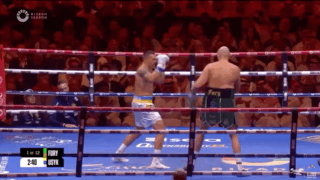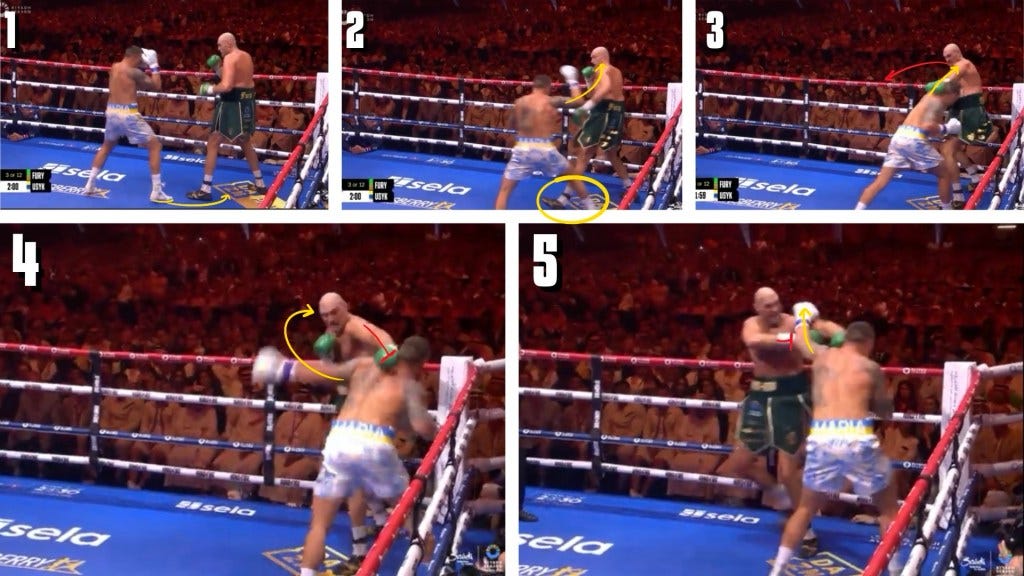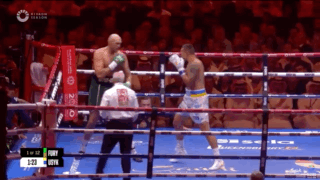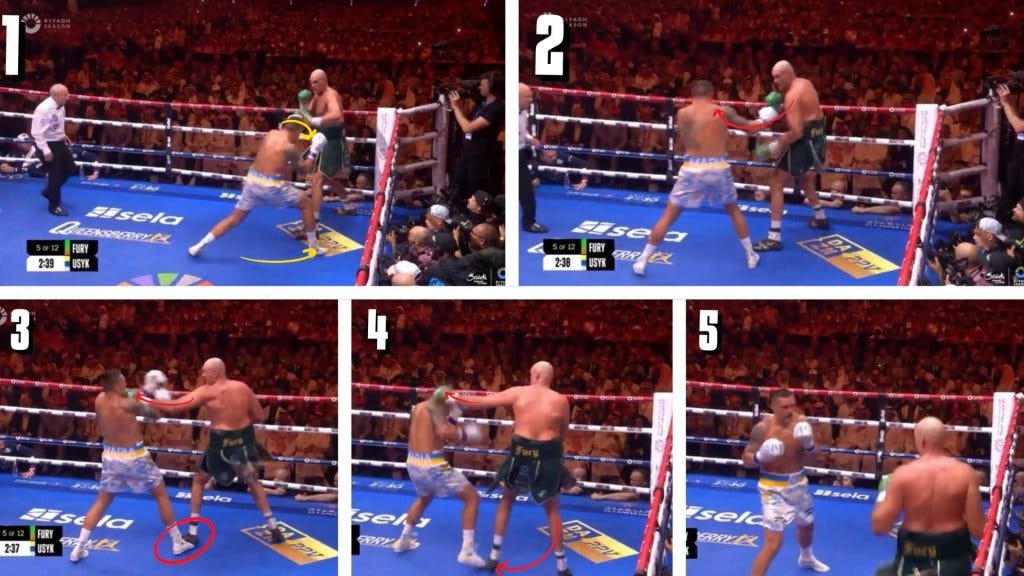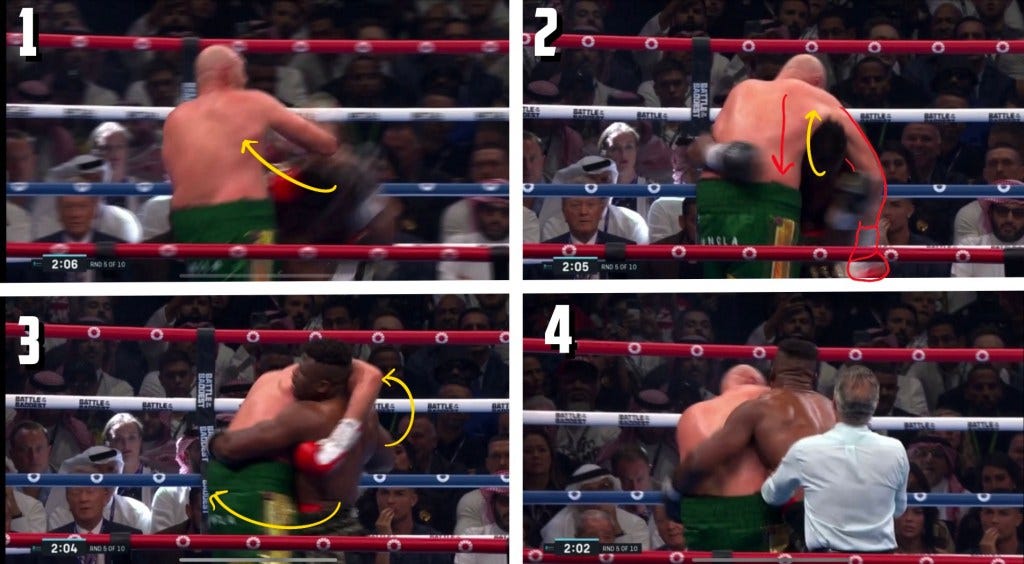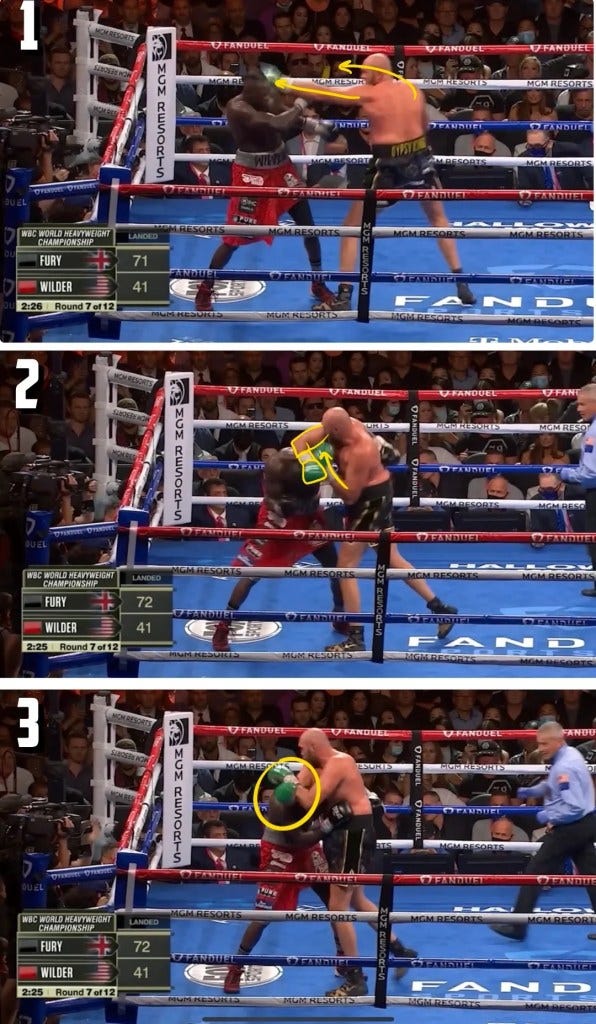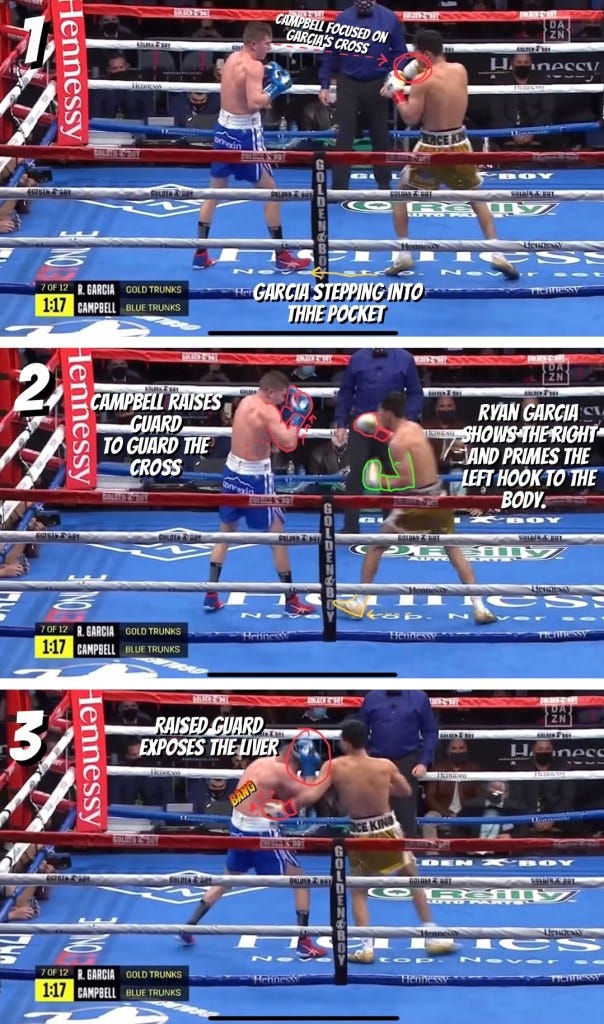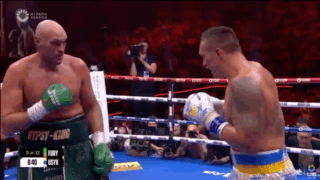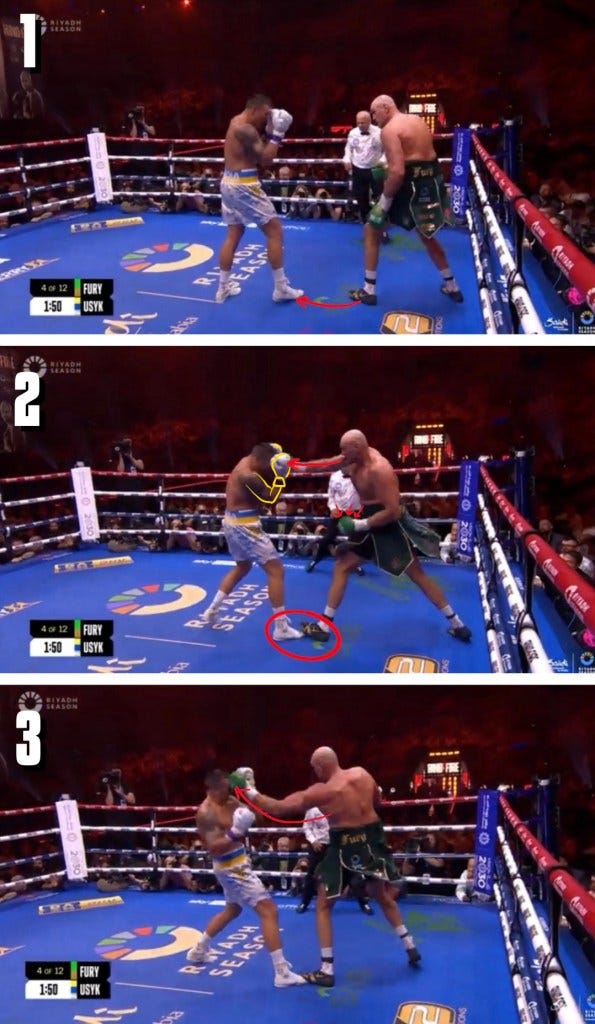The moment Oleksandr Usyk defeated Tyson Fury, the dynamic of the heavyweight division changed.
Thank you for reading “How Tyson Fury can defeat Oleksandr Usyk.” Please take a moment and sign up to the newsletter below and studies like these will come directly to your inbox.
No longer was the braggadocio, “The Gypsy King,” the lineal champion. Instead, the lineal championship returned to where Fury captured it nearly 10 years ago: in the national of Ukraine.
Now, Usyk and Fury are rematching. The two will put on a fantastic fight. This calls for a film study. How did Oleksandr Usyk defeat Tyson Fury? What can the Brit do to tilt the scales in his favor upon this weekend’s rematch? What can we expect this fight to look like?
The Oleksandr Usyk approach
To understand how Tyson Fury can beat Oleksandr Usyk, we have to first understand how Usyk approached the fight. Being the smaller man, Usyk relied on his mobility to best “The Gypsy King.”
Off the jump, Usyk shows just this. He utilized the outside dip to counter Fury’s seven inch reach advantage.
This would lead to Usyk attacking with a straight left to the body that would consistently find its mark.
Usyk also worked to get the then-35-year-old to the corner to force him to his power hand. (1) When Fury was near the corner, (2) Usyk would step in with his jab and establish the outside foot. This prevents Fury from going away from the power hand lest he trip over the leg of Usyk. He also can’t go backwards. (3) Usyk follows with a left hook and Fury sees this as an exit. (4) As he exits, Usyk consistently would loop the left hand back around to meet Fury as he exited. (5) Notice Fury’s long guard–more on this later.
Usyk is also very fond of mixing up his punches. Double jabs, body, head, left, right, hook, straight, Usyk will often mix in many different punching combinations in the same sequence.
Then, of course, Fury needs to be disciplined in the situations where Usyk can catch him in open space.
Tyson Fury successes
This fight will have to be starkly different from the first. Tyson Fury will have to fight dirty. He will have to take his successes and build off of them in a huge way.
Of course Tyson Fury found the uppercut and utilized it most of the night. After being hurt, however, that output starkly dropped.
With Usyk being a southpaw, Fury adopted the long guard. This was extra effective considering his previously mentioned reach advantage. This kept Usyk from consistently finding the heavier shots for the first half of the fight.
Fury also looked to establish lead hand dominance. Andre Ward was particularly adept at fighting the lead hand as well. He would constantly paw at and place his hand on top of a southpaws.
For more on the long guard, we will turn to a previous article titled Shakur Stevenson: Defensive boxing masterclass.
Stifling the opponent’s jab with the lead hand is not the only way Shakur Stevenson makes himself hard to hit. He utilizes cross checks, forearm deflections, and the shoulder roll to make trying to hit him the most frustrating part of fighting him.
Checking with both hands comes naturally to Shakur Stevenson. When Harutyunyan pressed, (1) Stevenson stifled the lead hand by placing his on top, blocking it’s straight path. As Harutyunyan throws the right cross, (2) Stevenson catches it with his left hand and employs the long guard to further make the path of a follow up punch difficult. Finally, (3) Stevenson reaches out again to touch the lead hand of Harutyunyan.
In combination with the hand checks, Stevenson will use his forearms, cross checking and more to further frustrate his foe.
These techniques are similar to what Fury uses and is capable of. Look for this against Usyk.
Fury also needs to capitalize when Usyk deviates from his customary discipline. There were few moments in the first fight where said moments took place.
Usyk uses his southpaw stance to gain the outside foot advantage. (1) Stepping in on the jab, Oleksandr Usyk establishes the outside foot advantage and (2) crashes into Tyson Fury. Notice how far behind Fury lies Usyk’s lead foot. This only allows Fury to go backwards or, as we see here, pivot into Usyk. Fortunately, (3) Fury lands a right cross to back Usyk off of him.
Tyson Fury will have to be hyper aware of foot positioning against Oleksandr Usyk.
(1) Starting with Usyk pushing Fury to the corner, Usyk dips to the outside and tries to push Fury to the corner. (2) Fury laterally moves away and (3) throws a lead hook while stepping on Usyk’s lead foot. This is sneaky and against the rules. But stepping on the lead foot, an aspect unique to a southpaw vs. orthodox matchup, allows Fury to (4) pivot out and (5) escape the corner.
Another thing Fury can use in the corner is the shoulder roll. If done correctly, the shoulder roll can cause Usyk to put out a bunch of punches that have little to no impact and tire the quicker fighter out.
Tiring out Oleksandr Usyk will be critical.
Using the size advantage
One big aspect of Tyson Fury’s game is the clinch. Often the bigger man, Fury will use his size to lean on and tire out his opponents. This aspect was largely absent from Fury’s fight with Usyk.
In How Francis Ngannou handled Tyson Fury’s clinch, we went into this topic in depth.
(1) When Tyson Fury threw a left hook, Ngannou dipped low and Fury saw this as a moment to tire out Ngannou’s back. (2) Fury drapes that arm over the neck of Ngannou. Not to let Fury lie down on him, Francis peeks his head out from under the arm and (4) goes behind Fury.
The absence of Fury’s clinch can be directly attributed to Oleksandr Usyk’s ability to negate the clinch. When Fury tried to drape that long arm over Usyk, the Ukrainian peeked out the back side and didn’t allow Fury to put his weight on him.
We saw the clinch used effectively against Deontay Wilder. (1) Fury fired a jab out to wilder and followed behind with a (2) right hook. Wilder fortunately dips underneath this hook and Fury leaves it across Wilder’s neck. This is very similar to the previous example with Francis Ngannou. Fury will (3) bring his left hand up and across his forearm. This is where Fury will push down on Wilder.
These clinch situations are crucial in the rematch with Oleksandr Usyk. A faster opponent, Usyk stays in the clear. But the best way to slow down a faster opponent is to literally grab on to them and not let go. Fury will have to do this, make life miserable, and tire out Usyk to win.
Fury’s best shots: The uppercut
The best moments for Tyson Fury came from his use of the uppercuts. With Usyk adopting a high guard, he also had to go to the body with hooks.
The left hook to the body will be Fury’s best friend. He routinely went to the body in the first fight and will have to be consistent in the rematch. Against a southpaw, the left to the body is a money shot.
We’ve talked about attacking the body of a southpaw in the past.
(1) Garcia will step into fighting range with Campbell and show him a right feint. Campbell thinks to himself, “The right cross is coming,” and brings up his hands to block the cross. (2) With Campbell’s right arm high, the path to the body is wide as day and Garcia loads up the left hand to land to the body. (3) The left lands perfectly and shuts down the body of Campbell who cannot continue.
Fury lived by the uppercut in the first fight. But it was often targeted to the head and the mid section from his right hand.
Fury lived by the uppercut in the first fight. But it was often targeted to the head and the mid section from his right hand.
(1) When on the lead foot, Fury would pull out some old tricks. (2) Leading with the cross, Fury would step on Usyk’s lead foot, as discussed earlier. He follows behind with a (3) lead left uppercut high. Adjusting here, Fury should invest to the body. Make Usyk hurt.
When Usyk sussed out Fury’s uppercut, he began to move laterally, moving himself away from the power hand of Fury.
To stop this, Fury has to be on the front foot and be able to grab Oleksandr Usyk.
As he did against Deontay Wilder, (1) Fury would back the American to the corner, throw a hook that goes high and (2) force his arm to rest on the back of Widler’s head. (3) Pulling down, Fury would land an (4) uppercut home to hurt the heavy hitting Wilder.
Beating Oleksandr Usyk is a tall task, even for Tyson Fury. The methods of The Gypsy King are wide reaching, however. He can make adjustments. The question is: How will Oleksandr Usyk adjust to Tyson Fury’s adjustments.




